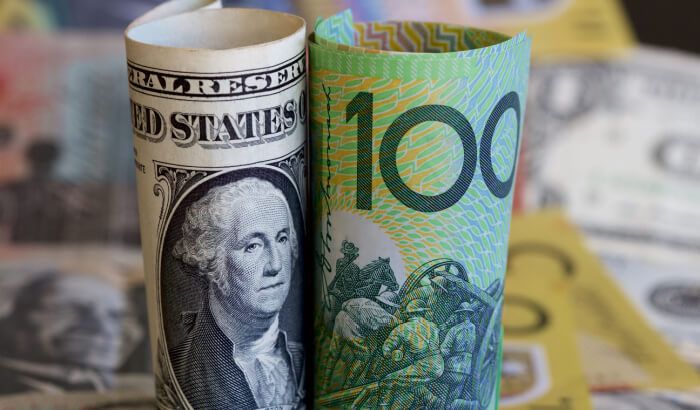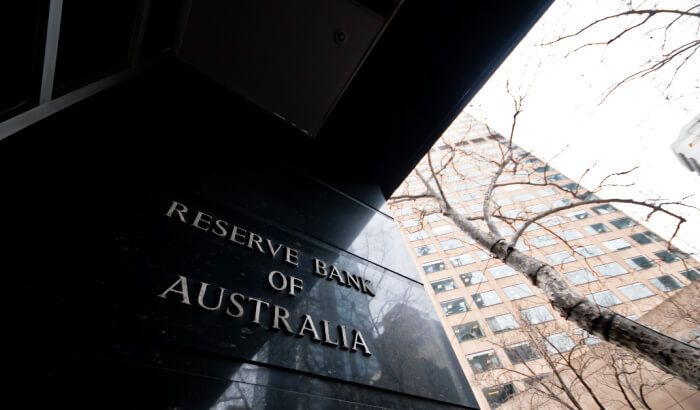
星期三 Sep 6 2023 06:39

10 最小

Concerns about global economic growth led to a strengthening of the dollar on Tuesday, resulting in the euro (EUR/USD) reaching its lowest point in nearly three months and the Australian dollar (AUD/USD) dropping by more than 1%. These currency movements were exacerbated by disappointing economic data from China and the decision of the Reserve Bank of Australia to keep interest rates unchanged.
The EUR/USD value decreased by 0.45% to 1.0747, and the British pound also experienced a 0.6% decline to $1.2555. These were their lowest levels since mid-June, primarily due to discouraging economic indicators from both China and Europe, which instigated a risk-averse sentiment across multiple asset classes.
China's Caixin services Purchasing Managers' Index (PMI) reached levels last observed during the widespread lockdowns in the country, adding to a string of weak economic data from the world's second-largest economy. As noted by Markets.com Chief Market Analyst Neil Wilson, the Caixin PMI slipped to 51.8 in August compared to 54.1 in July. Chinese shares were broadly down on the session and the Hang Seng fell more than 2%, erasing previous growth triggered by stimulus news on Monday.
Additionally, data revealed that business activity in the eurozone declined more rapidly than initially anticipated in the previous month. “The PMI data is painting a woeful picture for the EZ economy. Eurozone business activity contracted faster in August, according to the latest flash PMI survey data from S&P Global, as the downturn spread further from manufacturing to services. Both sectors of the economy reported falling output and new orders,” Neil Wilson wrote in his most recent daily market summary.
In a comment to Reuters, Simon Harvey, the head of FX analysis at Monex Europe, said: "The twin drivers of dollar strength of U.S. higher yields and weaker growth conditions out of the U.S. are still in fifth gear.”
Upon resuming trading after the Labor Day holiday, U.S. treasuries experienced a decline, causing the U.S. 10-year treasury yield to rise by 4.5 basis points, reaching 4.2163%.
In a summary dated September 4, ING analyst Chris Turner noted dollar strength being tied to the strength of the U.S. economy, which stood at a sharp contrast with data from Europe and China:
“The dollar has had a good couple of months. It has been buoyed by domestic strength in the US economy and souring sentiment in key trading partners such as Europe and China. The source of that strong domestic demand in the US has been a tight labour market, which has powered consumption. Despite US wage growth softening in August and the unemployment rate finally climbing, US Treasury yields actually rose on Friday and the dollar strengthened. Driving that move may have been the rise in the participation rate with people returning to the workforce. This suggests that the narrative may have moved on from the disinflation debate towards the extension of employment, consumption and domestic demand.”
Franceso Pesole, a FX analyst at Dutch bank ING, followed up by writing that the greenback was “comfortably overvalued” on September 5, with a potential correction conditional on worsening U.S. market data:
“From a technical point of view, we must note that the dollar’s outperformance in August was not entirely justified by market drivers (i.e. relative rates, equity, and commodity dynamics). Our short-term fair value model shows some dollar short-term overvaluation against all G10 currencies, ranging from quite moderate for GBP (less than 1%) to quite stretched for Scandies (above 3%). Still, one characteristic of the recent dollar price action is that it has taken poor US data to initiate any substantial correction, and we suspect a deterioration in the economic outlook remains the only real path for the mis-valuation gap to be closed. What this gap is telling us now is that the dollar correction, once the US data turn, can be quite rapid and substantial.”
An earlier analysis from Citibank Hong Kong concurred with ING, voicing doubts about the timing of a potential dollar reversal:
“The exact timeline for a significant and sustained reversal in DXY remains elusive given the continuing economic and policy disappointments out of China and weakness in euro area soft data (PMIs) versus the resilience of the US labor market.”
The bank’s 12-month forecast saw EUR/USD trading at $1.14, while its long-term EUR/USD projection placed the currency pair at a higher average of $1.20.
“USD remains at historical highs on an inflation-adjusted basis ahead of a likely deeper slowdown in the US economy with the Fed expected to follow with deeper rate cuts than its peers. This may make USD bulls cautious at the current levels,” the comment said.
ING’s EUR/USD forecast saw the pair trading at $1.15 by Q4 2023, peaking at $1.18 in Q1 and Q2 2024, before retreating back to the $1.15 level by Q3 2024.
DXY refers to the U.S. Dollar Index, which tracks the strength of the dollar against a basket of six major currencies: the euro, Swiss franc, Japanese yen, Canadian dollar, British pound and Swedish krona.

The Australian dollar, which is closely tied to China's economic performance, was significantly affected on Tuesday, registering a 1.46% decrease to $0.6372, closing in on its lowest level since last November. This decline was exacerbated by the Reserve Bank of Australia's (RBA) most recent policy update.
The RBA opted to keep its benchmark cash rate steady at 4.1% for the third consecutive month. Although it kept the possibility of future rate hikes open, as hinted at previously, the market is currently pricing in only around a 30% likelihood of rates increasing from this point onwards.
"The RBA's policy stance overall remains a weight on the Aussie, especially against the U.S. dollar, where the Fed funds rate seems highly likely to remain 125+ basis points above the RBA cash rate deep into 2024," Westpac analyst Sean Callow told Reuters.
Francesco Pesole, FX analyst at Dutch bank ING, responded to the news by writing that the Aussie had room for recovery, as the RBA’s stance included room for further data-dependent tightening:
“The Aussie dollar has dropped below the key 0.6400 support following the combined impact of grim PMI figures out of China and the Reserve Bank of Australia (RBA) keeping rates on hold. But even when compounding these two drivers, the collapse in AUD/USD appears quite overdone.
The Aussie dollar is already pricing in a considerable amount of risk premium related to the slowdown in the Chinese economy, meaning it can show an asymmetrically positive response to any positive news (e.g. fiscal/monetary stimulus) moving on. Domestically, the RBA pause had more than one string attached. The last statement under Governor Philip Lowe (Michele Bullock will replace him in two weeks) kept the door well open to more tightening if needed, essentially reiterating a data-dependent approach that has so far been closely followed by the RBA.
Markets are not pricing in any more hikes by the RBA, meaning the room for any dovish surprises to hit AUD is small. Instead, we would be wary not to rule out any more hikes just yet. We see decent room for a recovery for the battered AUD.”
ING’s Australian dollar forecast, last updated on August 31, indicated potential upside for the currency, projecting a potential level of $0.70 in Q4 2023. Going forward, the Dutch lender’s AUD/USD forecast indicated the pair could rise further to trade at an average of $0.72 in Q1 2024 and $0.74 in Q2 2024.
According to economics data aggregator TradingEconomics’ models and analyst surveys, the Australian dollar could trade at $0.63 by the end of this quarter. The platform’s 12-month Australian dollar projection was bearish on the currency, as it saw it trading at a potential level of $0.59 by early September 2024.
In a forecast update published on August 28, analysts at Citibank Hong Kong’s Wealth Management division saw the AUD/USD currency pair trading at $0.65 throughout the next 12 months, with a long-term Aussie forecast of $0.76. The bank forecast two potential further 25-basis-point hikes by the RBA in the coming months:
“Sluggish China to weigh on AUD, but near-term hawkish risks from RBA remain. Citi sees two more 25bps hikes in October and November, necessary to combat higher services inflation. This may not necessarily lift AUD much but it provides stronger support for AUDUSD around the 0.64-0.65 area,” the analysts wrote.
When considering foreign currency (forex) for trading and price predictions, remember that trading CFDs involves a significant degree of risk and could result in capital loss. Past performance is not indicative of any future results. This information is provided for informative purposes only and should not be construed to be investment advice.
